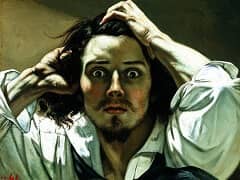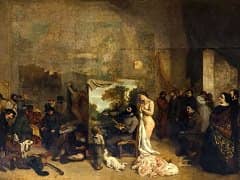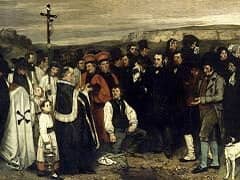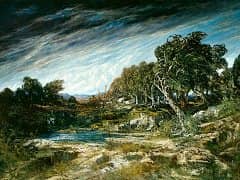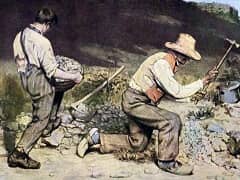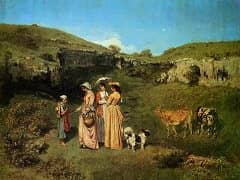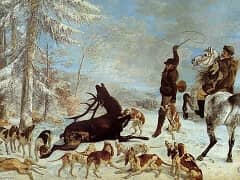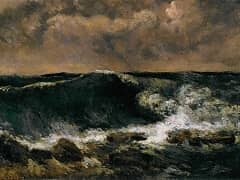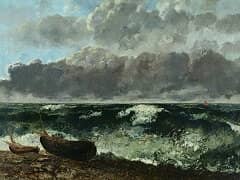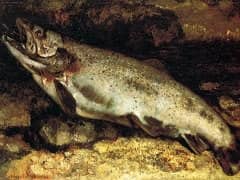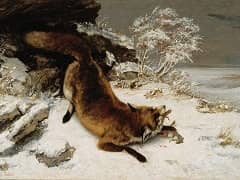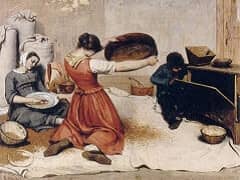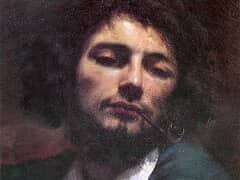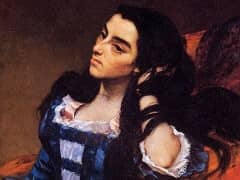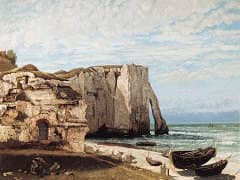Girl with Seagulls Trouville, 1865 by Gustave Courbet
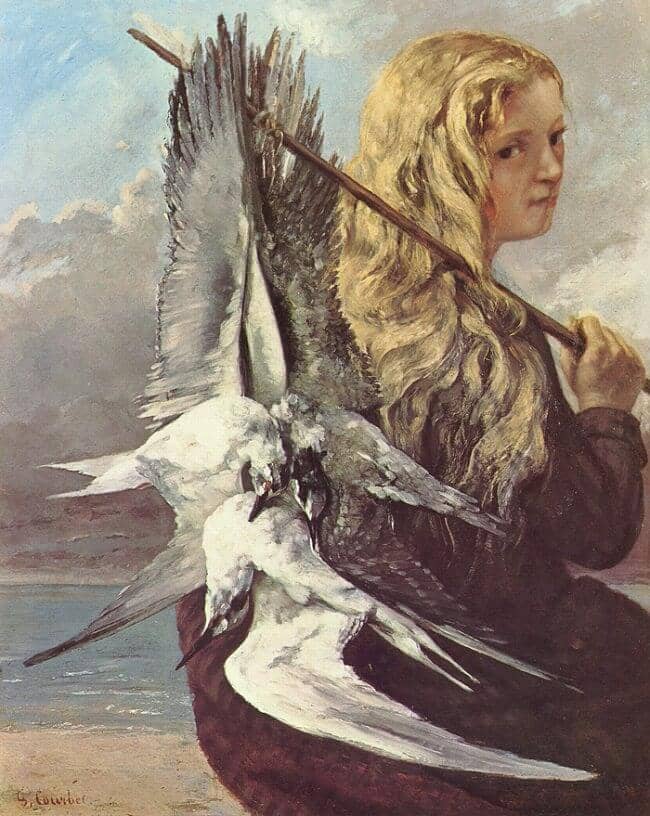
Like the Woman in a Podoscaphe, this painting was a "portrait" originating not in a commission from a vacationer but initiated by the painter himself as a result of his observations of the life of the year-round residents of the harbor resort. In it are combined in an extraordinary and unsettling way two of Courbet's obsessive themes: a woman's long wavy hair and the natural pelt of a wild creature, in this case the feathers of a trio of seagulls.
Both themes here provide a bravura feast of painting: the thick, ruddy blonde curves of the girl's chevelure juxtaposed with the beautifully painted birds, their enormous range of subtly perceived tones of gray running between the white of their breasts and the black of their beaks. Courbet is clearly as fascinated by the plumage of these sea birds as he is by the more familiar fur of the fox and the coat of the deer. In this painting, as opposed to the paintings of the hunt, he has been given the welcome opportunity to put together the wild plumage of dead birds with the live, natural growth of a healthy young woman. The image is masterfully composed, the figure thrust right up against the picture plane and seen almost from the rear so that her burden becomes intensely close to the viewer. She is also nearly crowded into the right-hand side of the picture.
This sense of powerful bulk on the right-hand two-thirds of the painting is dramatically in contrast to the left-hand side, where sand, sea, and sky provide a view of vast open space, a seascape in itself. The line of the pole articulates a corner into which the girl's face is fitted, turned to look over her shoulder in a cool and somewhat shuttered way. This geometric straight line rhymes and contrasts with the long organic lines of the dead birds' wings. The grouping of gulls is the emotional as well as physical focus of the painting. Heads and breasts converge at the center, two of the heads tenderly placed, as if grooming, on the outstretched breast of the third. From this center a vertical mass of wings rises to the pole, and from it radiate the sharp, angular forms of wings and tails, slicing through the space like knives.

